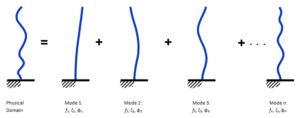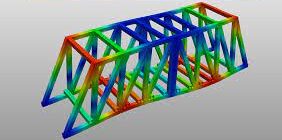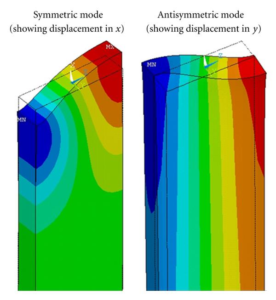Unveiling Free-Free Modal Analysis: Principles, Applications, and Benefits
Introduction:
Structural analysis is a critical aspect of engineering and design, providing invaluable insights into the dynamic behavior of various systems. One powerful technique used in this domain is Free-Free Modal Analysis. In this blog, we’ll delve into the intricacies of this methodology, understanding its principles, applications, and how it contributes to optimizing the design and performance of structures.
Understanding Free-Free Modal Analysis:
Modal analysis is a technique employed to study the dynamic characteristics of structures by identifying their natural frequencies and mode shapes. Free-Free Modal Analysis, in particular, focuses on systems that are not restrained or fixed at their boundaries. This method is especially relevant in scenarios where the structural elements are not rigidly connected to external supports.
Principles of Free-Free Modal Analysis:
Natural Frequencies: The primary goal of Free-Free Modal Analysis is to determine the natural frequencies of a structure. These frequencies represent the inherent vibration modes of the system, shedding light on how it responds to dynamic forces.

Mode Shapes: Mode shapes describe the spatial distribution of displacements and provide insight into how a structure deforms during vibration. Identifying mode shapes is crucial for understanding the dynamic behavior of the system.

Boundary Conditions: The ‘free-free’ aspect of this analysis signifies that the structure is unrestrained at its boundaries. This condition allows for a more accurate representation of the true dynamic response of the structure, as it eliminates the influence of external constraints.
Applications of Free-Free Modal Analysis:
Aerospace Engineering: In the aerospace industry, Free-Free Modal Analysis is pivotal for understanding the vibration characteristics of aircraft and spacecraft structures. Identifying and mitigating potential resonances is crucial to ensuring the safety and longevity of these vehicles.


Automotive Industry: Car manufacturers employ Free-Free Modal Analysis to assess the structural integrity and performance of vehicle components. This analysis aids in optimizing designs for enhanced safety, comfort, and fuel efficiency.
Civil Engineering: Free-Free Modal Analysis is applicable in civil engineering to study the dynamic behavior of bridges, buildings, and other structures subjected to environmental loads such as wind and earthquakes. This knowledge helps engineers design structures that can withstand dynamic forces.

Mechanical Systems: In the realm of mechanical engineering, this analysis technique is used to study the vibrations of machinery and mechanical components. It assists in identifying potential sources of failure and optimizing the design for reliability.
Benefits of Free-Free Modal Analysis:
Accurate Representation: By considering the free-free boundary conditions, this analysis method provides a more realistic representation of how a structure behaves in real-world conditions.
Optimization of Designs: Understanding the natural frequencies and mode shapes allows engineers to optimize designs, ensuring that structures can withstand dynamic loads without experiencing resonance or other detrimental effects.

Early Detection of Issues: Identifying potential issues related to vibration and dynamic response during the design phase enables engineers to address and rectify problems before the construction or manufacturing process begins.

Conclusion:
Free-Free Modal Analysis stands as a powerful tool in the engineer’s toolkit, offering insights into the dynamic behavior of structures across various industries. From aerospace to civil engineering, the application of this methodology contributes to safer, more efficient, and resilient designs. As technology continues to advance, the integration of modal analysis techniques like Free-Free Modal Analysis will play a pivotal role in shaping the future of structural engineering.




